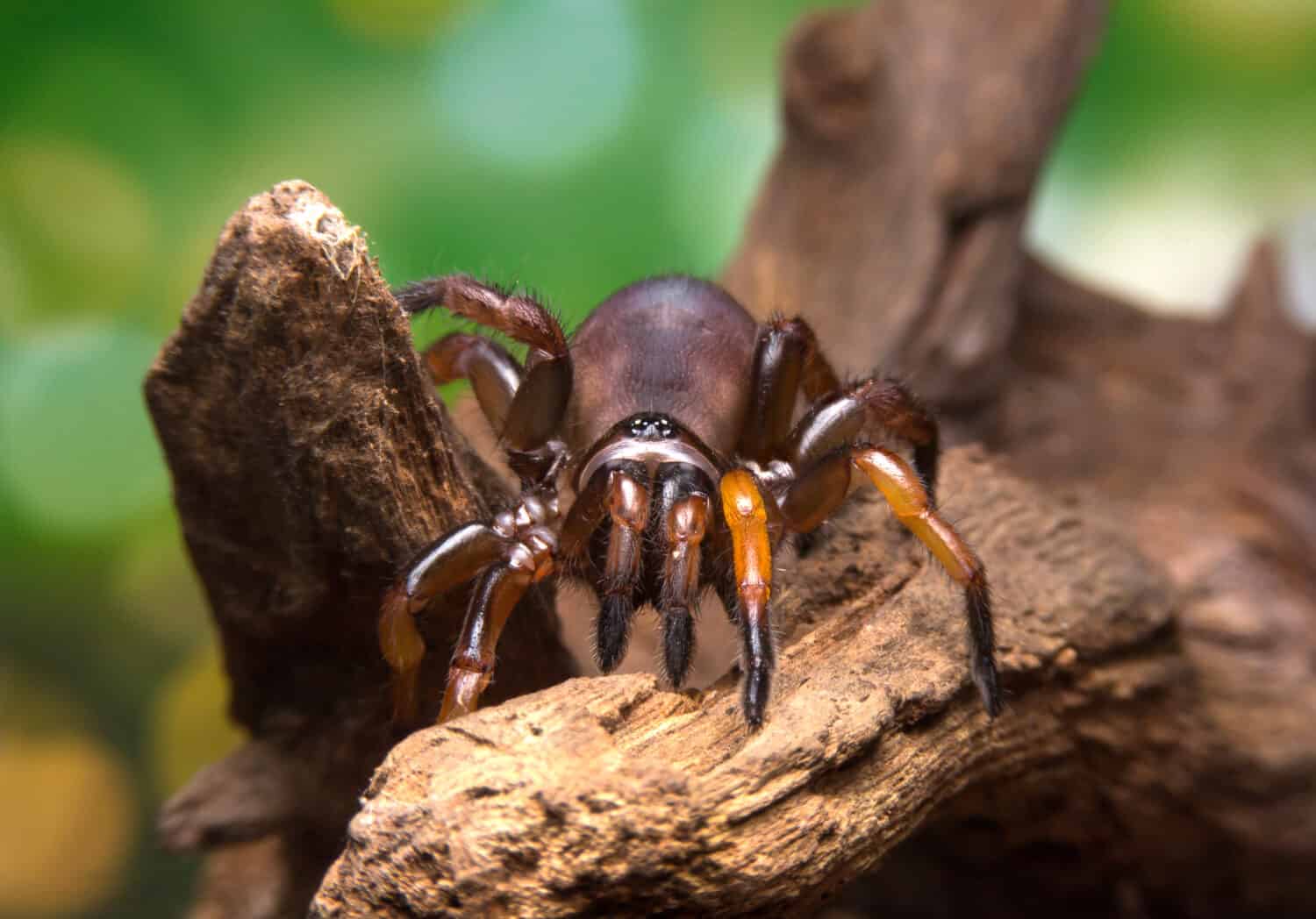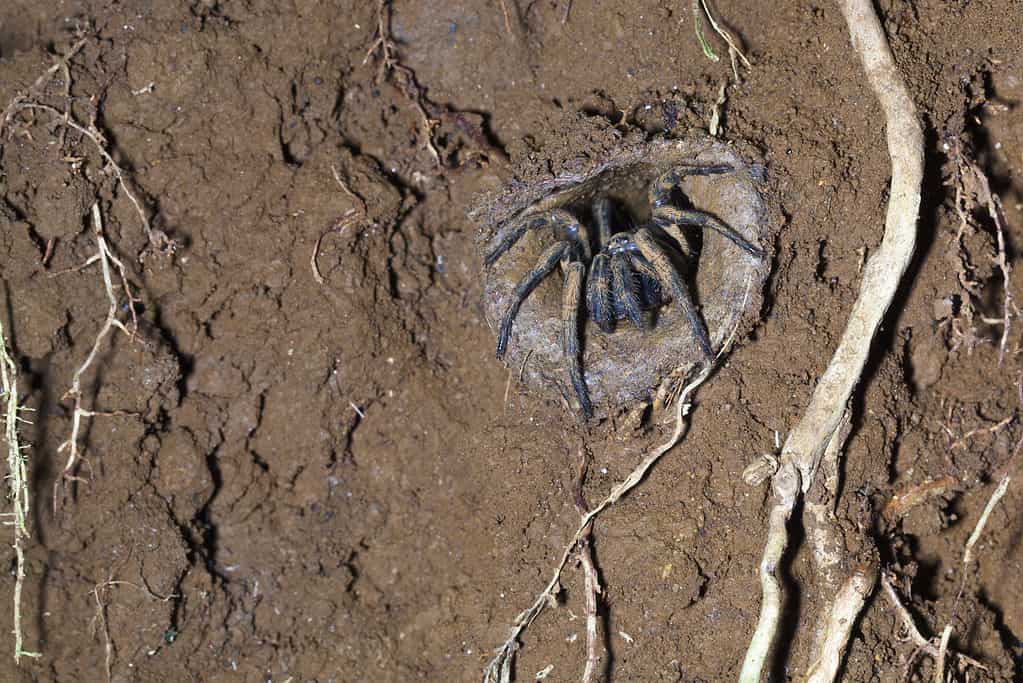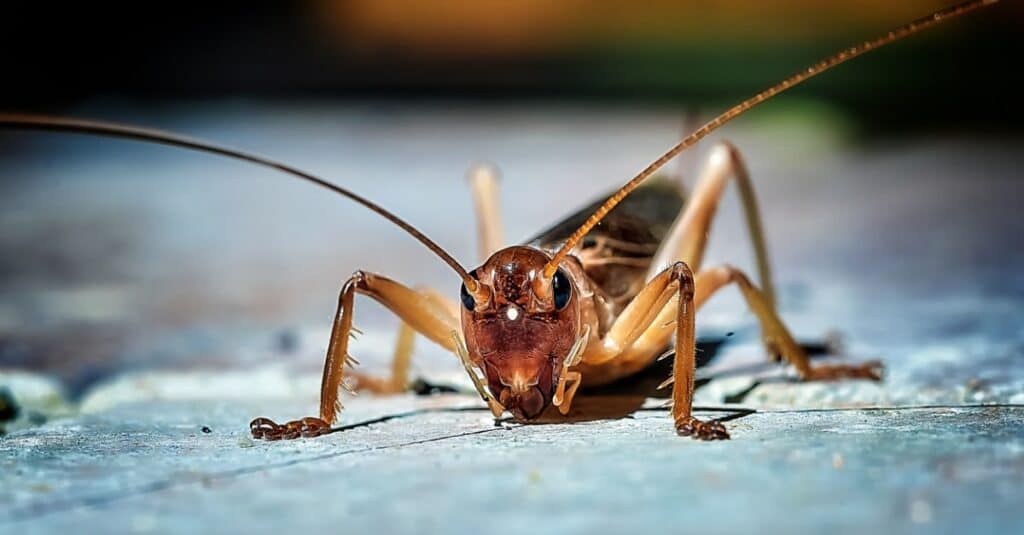Australia is a majestic and breathtakingly beautiful continent. There, animals and plants not found anywhere else thrive in the outback. Many of the flora and fauna simply would not survive anywhere else on our planet. Australia has an extremely diverse population of all that inhabits the extra large island. Many people joke that Australia offers many ways to meet your end that you cannot find anywhere else. There is a lot of truth in that statement. However, the trapdoor spiders in Australia will not eat you or guide you closer to death. They are rarely even seen since they live in burrows and do not venture out if they can help it.
However, there is something very ominous about Australia and its spider population. Australia is known for its super-sized insects and arachnids. It seems like everything in Australia is magnified not only in size but in danger level. They even have “flying spiders.” The trapdoor spider certainly sounds frightening enough, but are these spiders worth all the hype? Let’s take a look at where the trapdoor spider lives and what it eats and see if they are the scary monsters they are made out to be.
What is a Trapdoor Spider?

Trapdoor spiders are an ancient species.
©Pichit Sansupa/Shutterstock.com
The common name “trapdoor spider” can be misleading at times but does only refer to the Idiopidae, Actinopodidae, Ctenizidae, Migidae, and Cyrtaucheniidae families. Though the name suggests the spiders all use a trapdoor on their homes, they do not. Some of the spiders simply use a dug-out dirt tunnel similar to tarantulas and some other types of spiders throughout the world. Life can be confusing for us humans. The trapdoor spiders are the largest and most widespread of the suborder Mygalomorphae. It is also the same suborder that tarantulas fall under.
These fearsome (not really) arachnid males wander around during warm, humid weather, searching for a mate or even several mates if they escape from the first one after mating without first being made into dinner. Since the females can live for 20 or more years, the males rarely live very long. The males leave their burrows and wander around looking for mates once they are mature. This wandering puts them at a much higher risk of becoming dinner by a hungry predator if their mate doesn’t eat them first. It’s a tough life for the male trapdoor spider.
The first trapdoor spiders have been traced back to the current climate-like conditions of the Miocene epoch, which was some 11 – 16 million years ago! They came much later than the dinosaurs, which became extinct roughly 65 million years ago. The oldest to-date fossil of a trapdoor spider is of the recently discovered Megamonodontium mccluskyi. The fossil was preserved in an iron-rich rock called “goethite” in a spot frequently used for fossil hunting in New South Wales.
Where Do Trapdoor Spiders Live?

Trapdoor spiders build individual burrows with a hinged trapdoor that helps them catch prey.
©iStock.com/zstockphotos
Trapdoor spiders make cozy little nests in the ground. On rare occasions, these small spiders can use funneled leaves that they coat along the inside with silk webbing. Since not all trapdoor spiders make a trapdoor entrance, the leaves serve their purpose as a good, stable home. The spiders line the perimeter around the entrance to their leafy homes with webbing. As soon as an insect comes in contact with the webbing, the vibrations will be felt by the spider inside its tunnel. They shoot out from the funneled leaf and grab their prey before taking it back inside their nest and eating it.
The same occurs if the spiders have a tunnel in the dirt, which is the case with most trapdoor spiders. In these open-door nests, the spiders are not fully protected, and their prey could detect the spider lying inside and avoid touching the trip lines altogether. This isn’t the case most of the time, or the open-door trapdoor spiders would not exist.
The Moveable Trapdoor
Many trapdoor spiders use a trapdoor, which provides them with the best coverage and protection from predators and the elements. The creation of the trapdoor requires excellent camouflage-type materials like leaves, debris, and dirt mixed with silk webbing. The silk strands surround the entrance to the tunnel-like triplines and also line the tunnel walls to help stabilize the dirt and keep it from caving in on the trapdoor spider inside.
When an insect is detected by the vibrations it sets off along the outside lines, and the spider will pop the trapdoor open and grab the insect. Afterward, the trapdoor spider will shut the door once again and eat its meal. They must respond quickly to the insect on the other side of the trapdoor and also quickly shut the trapdoor to not give away the burrow’s location to any other surrounding insects.
Female trapdoor spiders spend almost their entire lives inside the burrow. After moving out of their mother’s nest as tiny spiderlings, the trapdoor spiders dig their burrows. When the spider molts, it will widen the inside of the tunnel so that it is big enough to hold their new size. This helps the spider remain safe while it stays in its burrow.
Knock, Knock, Knocking on the Trapdoor of Love
Trapdoor spiders reach maturity when they are several years old, but since they live for upwards of 5 – 20 years, they have plenty of time left. Some have even lived to be in their 40s! When a male has reached maturity, they leave the nest to search for a mate. Since the females remain in their tunnels for their entire lives, the males must knock at the door, so to speak. They taste the web lines laid at the entrance to make sure the spider is female, then tap on the lines until she exits. Once she exits, the male drums his pedipalps on the ground, and if she accepts him, he enters the tunnel, and they mate. If she does not accept him, it’s time for him to get out of there before he becomes a meal.
After they mate, the male retreats quickly so the female does not eat him. If he makes it out alive, he will go on to mate with several more females before finally dying. Each door he chooses to knock on could be his last. The male trapdoor spiders have very short lives for several reasons; ending up as a post-coital snack is at the top of that list!
What do Australian Trapdoor Spiders Eat?

Trapdoor spiders aren’t into cheeseburgers, but they can’t pass down a snack cricket.
©iStock.com/tracielouise
Trapdoor spiders have several unique ways to catch prey. One way is to lay with their trapdoor propped open a bit and their legs sticking out of the doorway slightly. They wait for an unsuspecting insect to land nearby or to walk past. The sensitive hairs on their legs pick up the slightest vibrations as the insect walks closer. Once the insect is within range, the propped trapdoor flies open with the spider right behind. They grab their victim and quickly back down into their lair to see what they’ve caught. If they aren’t a huge fan of the catch, they let the lucky insect go.
Another way these intelligent spiders hunt is to lay grass or twigs around the entrance to their tunnel. They wait until the insect causes vibrations by touching either, then rush outside to grab the insect.
What the Not-So-Lucky Insect Might Be
Like most spiders, trapdoor spiders are opportunistic hunters and eat a wide variety of insects. Sometimes they may eat other spiders, too. Their preferred insect meals are crickets, beetles, moths, caterpillars, praying mantises, grasshoppers, and any other crawling insect that happens to stumble upon the trapdoor spider’s lair. Sometimes, these skilled hunters even catch small vertebrates like mice, moles, small baby birds, baby snakes, frogs, and small fish.
What a Giant Current-Day Australian Trapdoor Spider Looks Like
The photo featured at the top of this post is © nokkaew/Shutterstock.com
Thank you for reading! Have some feedback for us? Contact the AZ Animals editorial team.







